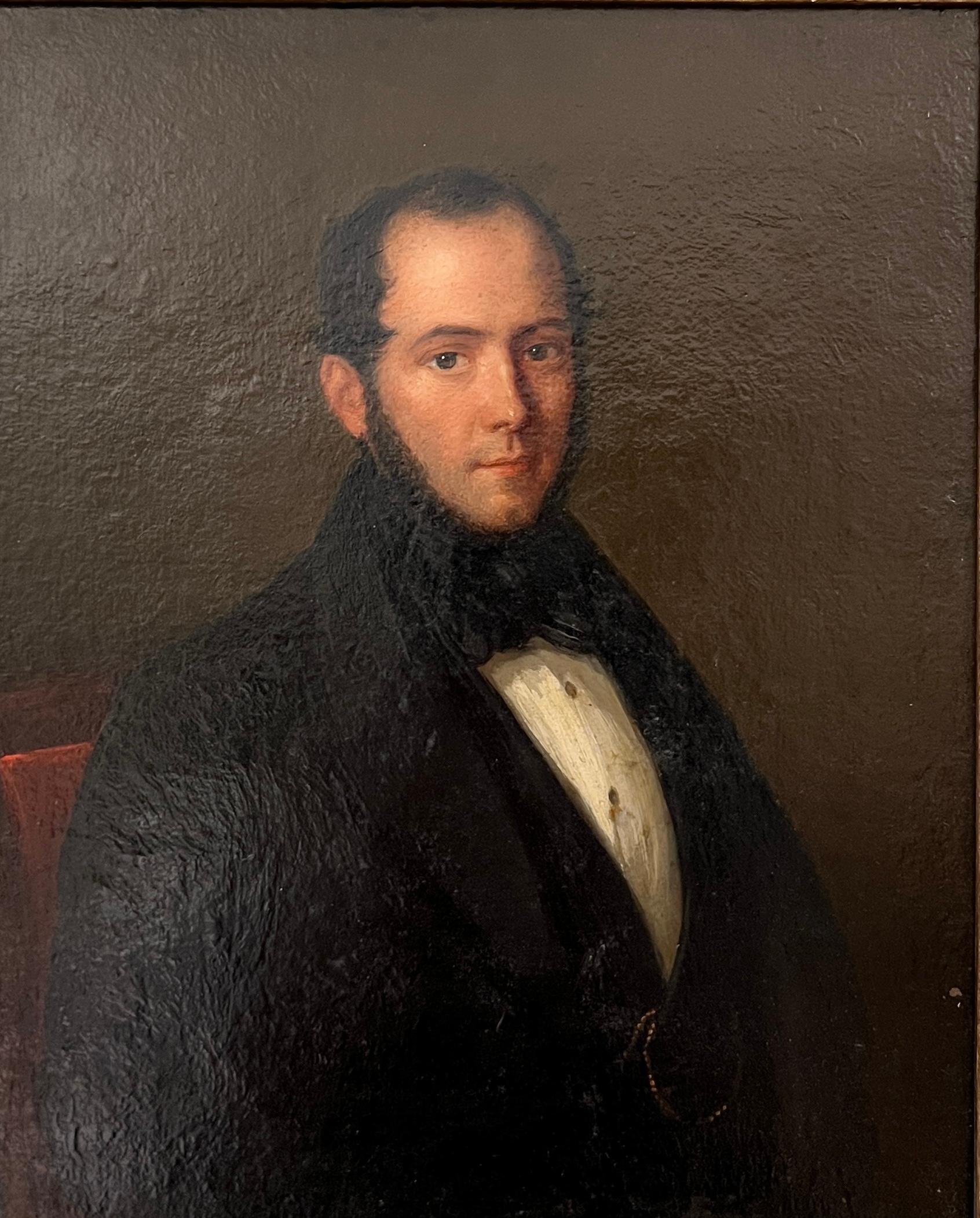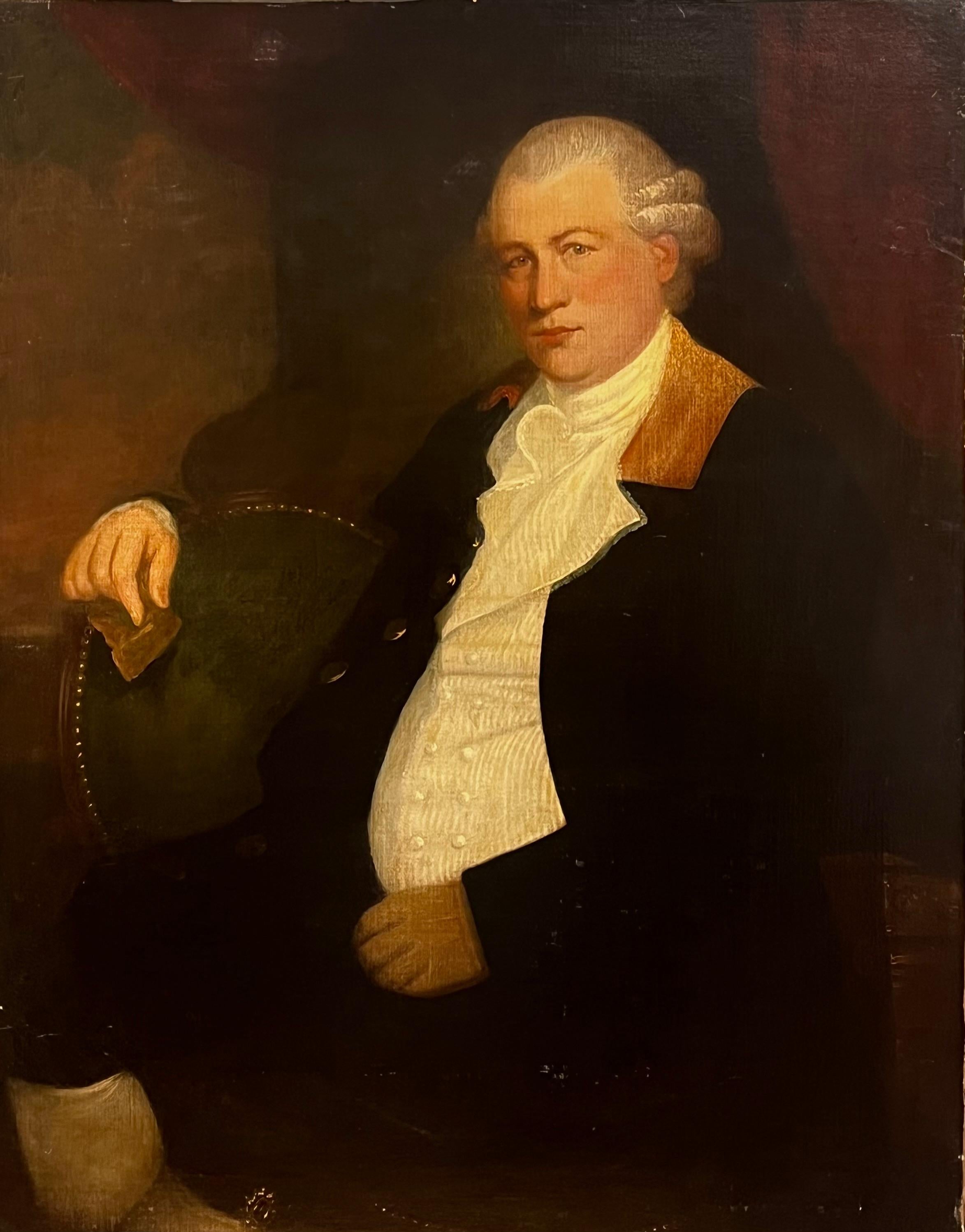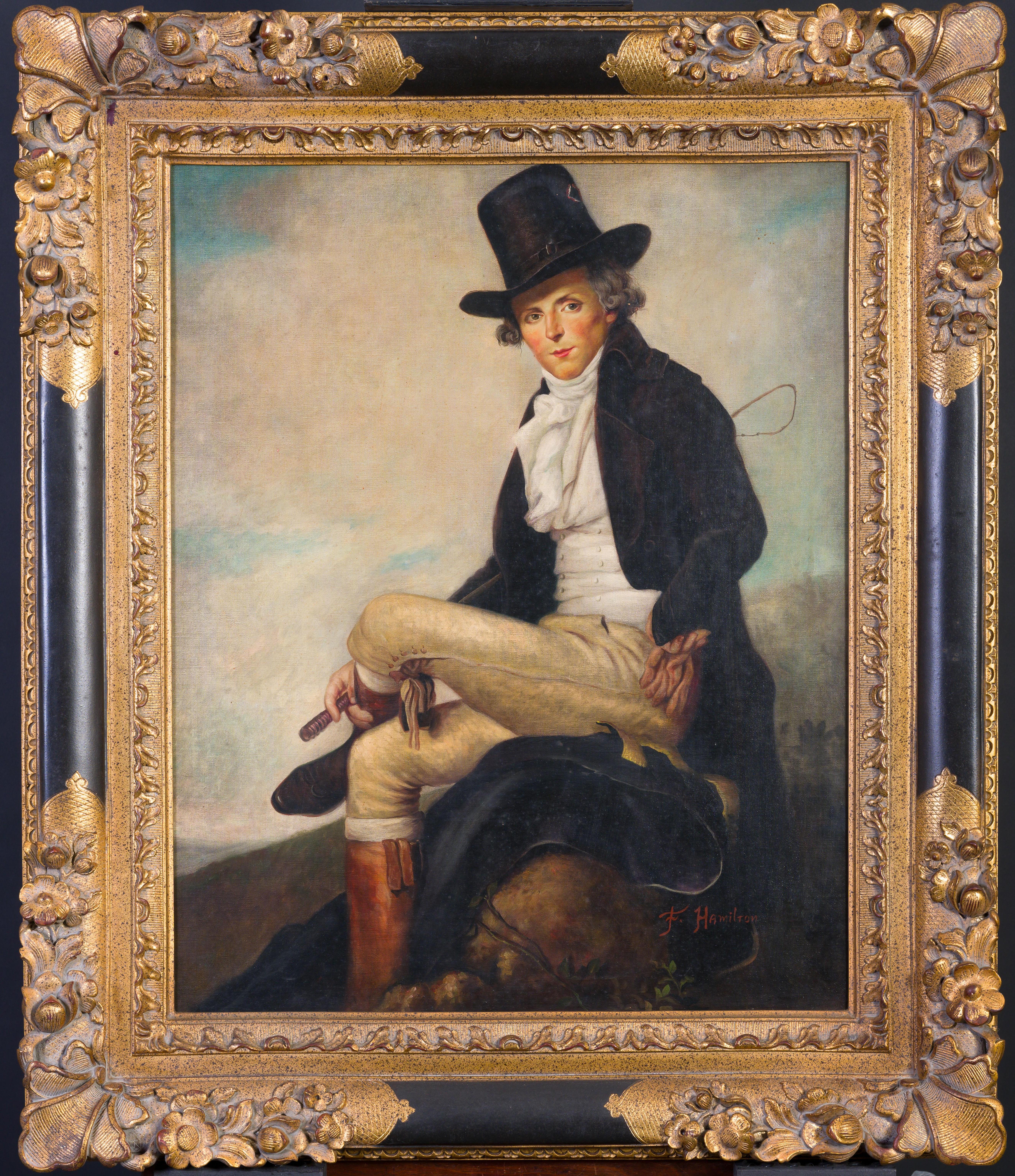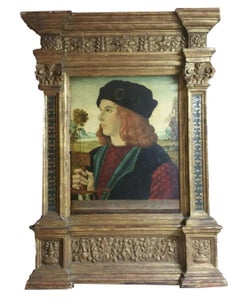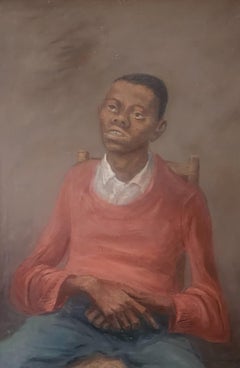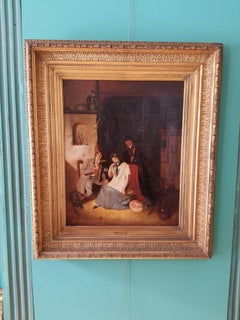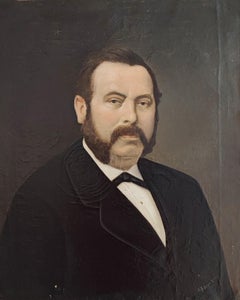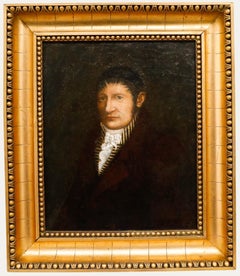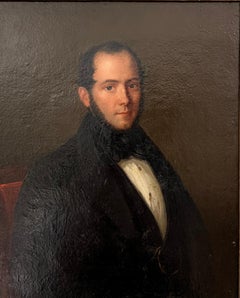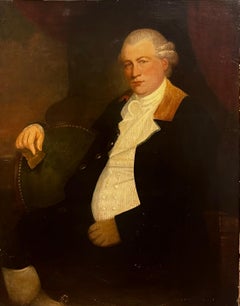Want more images or videos?
Request additional images or videos from the seller
1 of 6
Joseph PolletPortrait
$6,000
£4,649.46
€5,276.19
CA$8,599.55
A$9,444
CHF 4,861.41
MX$113,000.21
NOK 61,896.46
SEK 58,006.20
DKK 39,404.75
About the Item
Signed lower right.
Description
A portrait of a stylized young man dressed in a blue coat with a ruffled white shirt in an artistic background suggest that it may be a portrait of a young actor or performer.
About the artist.
Joseph Pollet was an important member of the Woodstock Art Colony. He emigrated to NYC in 1911 from Albbruck, Germany (born in 1897) and at age 21 had a promising career as an advertising copywriter. While working, he studied painting and his landscapes were immediately successful in NYC galleries. He studied at the Art Student's League with John Sloan, Robert Henri, and Homer Boss. From 1954-61, he lived in Paris and Italy. In 1971 , a fire destroyed 100-150 paintings of his paintings in his Greenwich Village studio.
Pollet exhibited at the Corcoran Gallery, Chicago Art Institute, Brooklyn Museum, Pennsylvania Academy, Los Angeles County Museum, and Carnegie International.
(Source: Falk, P. Who Was Who in American Art)
- Creator:Joseph Pollet (1897 - 1979, American)
- Dimensions:Height: 24 in (60.96 cm)Width: 21 in (53.34 cm)Depth: 4 in (10.16 cm)
- Medium:
- Movement & Style:
- Period:
- Condition:
- Gallery Location:Saratoga Springs, NY
- Reference Number:1stDibs: LU17028283662
About the Seller
4.2
Vetted Professional Seller
Every seller passes strict standards for authenticity and reliability
Established in 1992
1stDibs seller since 2015
32 sales on 1stDibs
Typical response time: 16 hours
- ShippingRetrieving quote...Shipping from: Saratoga Springs, NY
- Return Policy
More From This Seller
View AllPortrait of a Young Boy
Located in Saratoga Springs, NY
Attributed Federico Icilio Joni (1866-1946, North Italian Sienese)
“Portrait of a Young Boy”
17 ¾ x 14” (on poplar panel)
Icilio Federico J...
Category
19th Century Old Masters Figurative Paintings
Materials
Panel, Oil
$20,000
A Gentlemen & Lady
Located in Saratoga Springs, NY
Pair of Portraits, attributed to the Prior-Hamblen School
American, ca. 1840–1855
The painting is not signed
Oil on panel, housed in original gilt frames with patterned borders
This...
Category
1840s Folk Art Portrait Paintings
Materials
Oil, Board
$14,500
African American Sitting Portrait
By Arnold Blanch
Located in Saratoga Springs, NY
Signed lower right.
Born in Mantorville, Minnesota, Arnold Blanch was a painter of scenes of social-realist American life with mystical overtones and a child-like seeming style. He was also a highly respected teacher, lecturer and visiting critic and was a spokesman for the art colony in Woodstock, New York. He was married to Lucile Blanch...
Category
Mid-20th Century Realist Portrait Paintings
Materials
Canvas, Oil
The Question to be Answered
Located in Saratoga Springs, NY
A beautiful 19th Century Northern European School genre, as a young gentleman poses a question to the young lady, as the father looks on. All is original and with the period frame. A...
Category
Late 19th Century Realist Interior Paintings
Materials
Canvas, Oil
Untitled
By Yanni Posnakoff
Located in Saratoga Springs, NY
Signed lower right
Yanni Posnakoff, a Greek by birth and a Russian by ancestry, was born on 4 August 1933 in Thessaloniki, Greece. He graduated from the Advanced School of Marine En...
Category
Late 20th Century Abstract Figurative Paintings
$2,500
Abstract
By Rolph Scarlett
Located in Saratoga Springs, NY
Signed lower right.
A major exponent of non-objective painting, Rolph Scarlett's career and artistic philosophy is closely linked with the early history of the Solomon R. Guggenheim...
Category
Mid-20th Century Abstract Abstract Paintings
Materials
Oil, Paper
$5,000
You May Also Like
Portrait of a notable
Located in Genève, GE
Work on canvas
Category
Early 1900s Portrait Paintings
Materials
Oil
Early 19th Century Oil - Portrait of a Gentleman
Located in Corsham, GB
A formal nineteenth-century portrait of a gentleman wearing a dark crimson coat with an elaborate collar, set against a dark background. Well presented in a gilt-effect frame with be...
Category
Early 19th Century Portrait Paintings
Materials
Oil
Portrait of an elegant
Located in Genève, GE
Work on cardboard
Golden wooden frame
39 x 33 x 5 cm
Category
19th Century Portrait Paintings
Materials
Oil
$1,857
Portrait of Benedict Arnold
By Ralph Earl
Located in Fredericksburg, VA
This portrait, attributed to the American painter Ralph Earl, captures Benedict Arnold, one of the most controversial figures of the American Revolutionary War. Ralph Earl, known for...
Category
Mid-18th Century Portrait Paintings
Materials
Canvas, Oil
Portrait of Pierre Seriziat
Located in Douglas, Isle of Man
Copy of a Portrait of Pierre Seriziat by Jacques Louis David which was painted in 1795 , David 1748-1825, this picture is a direct copy by an artist by the name of F. Hamilton. There...
Category
Late 20th Century Portrait Paintings
Materials
Canvas, Oil, C Print
Portrait of a man
By Antoine Jean Gros
Located in Paris, IDF
French school from the beginning of the 19th century
Three-quarter bust portrait of a man
Oil on panel
28 x 21 cm
Circa 1820
This portrait of a man, typical of the French school o...
Category
Early 19th Century French School Portrait Paintings
Materials
Oil


